Decoding the Foundation of Technology: Hardware vs. Software
Decoding the Foundation of Technology: Hardware vs. Software
In the ever-expanding world of technology, two integral components govern our digital experiences: hardware and software. While these terms might seem familiar, understanding their nuances unveils the intricacies of our technological ecosystem. Continue reading to unravel the essence of hardware and software and their indispensable roles in shaping our digital landscape.
At the core of the distinction lies the tangible nature of hardware and the intangible essence of software. Hardware encompasses the physical components of a computer system—monitors, keyboards, CPUs, and memory modules—entities you can touch and see. Something worth of further consideration is the fact that all these various components can be further classified into input or output devices. Input devices are those that send data to the computer via keyboards or mouses, as well as the sensor that detects pointer movement, which allow data to be entered into the computer and actions to be executed with the left and right buttons. Then we have the output devices, which in contrast consist of peripherals that receive data from the computer and display the aforementioned information. Examples for these devices are monitors, printers. Aside from these, we have the secondary storage devices which are necessary for computers and mobile devices to function, such as hard drives, solid-state drives, memory cards and USB drives.
Conversely, software exists as data and code. When you launch a web browser, play a video game, or edit a photo on your computer, you're interacting with software. Operating systems, applications, games, and even the smallest utility programs—all constitute software, guiding hardware operations invisibly behind the scenes, from operating systems to web browsers and everything in between. While hardware and software are distinct entities, they are intricately interconnected, each relying on the other to function effectively. Consider the example of a smartphone: the physical device represents the hardware, while the operating system and apps constitute the software. If we were to strip away the software from a smartphone, we'd be left with a mere shell—a lifeless object incapable of performing any tasks. Conversely, without hardware, software remains idle, lacking the platform to execute its instructions.
Hardware serves as the executor, responsible for executing instructions and performing tasks. It provides the necessary platform for software to run seamlessly. Conversely, software embodies the instructions themselves, dictating to hardware what to do and how to do it. Whether it's launching applications, editing documents, or browsing the internet, software orchestrates the functionality of hardware, transforming it into a dynamic tool for users.
When we envision hardware, we conjure images of processors, memory chips, graphics cards, and input/output devices like keyboards and mice—foundational elements that constitute the physical infrastructure of computing. In contrast, software manifests as word processors, web browsers, operating systems, games, and antivirus programs—applications that harness the capabilities of hardware to fulfil diverse user needs.
Regarding any alterations, modifying hardware often entails physically altering or replacing components—a tangible process that requires technical expertise. From upgrading RAM to replacing a faulty hard drive, hardware modifications involve tangible interventions. Conversely, software modifications occur in the digital realm, where code is refined, updated, and patched to enhance functionality or address vulnerabilities—a process that unfolds seamlessly within the virtual confines of software development.
When taking hardware investments into consideration, they typically entail higher costs due to the procurement of physical components. From the intricate circuits of microchips to the robust construction of hard drives, hardware expenditures reflect material investments. Conversely, while software costs vary widely—from free open-source solutions to premium enterprise applications—the overall expenditure tends to be lower, reflecting the intellectual investment in code development and licensing.
Hardware's physicality imposes constraints on portability, with size and weight dictating mobility. Laptops, smartphones, and tablets strive for portability, yet inherent limitations persist. Conversely, software transcends physical barriers, boasting unparalleled flexibility and portability. Whether deployed on desktops, laptops, or mobile devices, software traverses platforms effortlessly, delivering consistent user experiences across diverse hardware environments. Their lifespan is finite, subject to wear and tear over time. Components deteriorate, and eventual failure necessitates replacement—a cycle inherent to the physical nature of hardware. In contrast, software enjoys indefinite longevity, with the capacity for continuous evolution through updates and maintenance. As technologies advance, software adapts, integrating new features and addressing emerging challenges without succumbing to the constraints of physical degradation.
The relationship between hardware and software underscores their interdependency. Hardware provides the foundation upon which software operates, while software leverages hardware resources to execute commands and fulfil user needs. From smartphones to supercomputers, this interplay fuels technological innovation, empowering users to harness the full potential of digital capabilities.
In essence, hardware and software form the bedrock of our digital existence, each playing a distinct yet interwoven role in shaping our technological landscape. As we navigate the ever-evolving realm of technology, the synergy between hardware and software will continue to propel innovation, heralding a future where possibilities are limitless, and the boundaries between the physical and virtual blur into insignificance.


